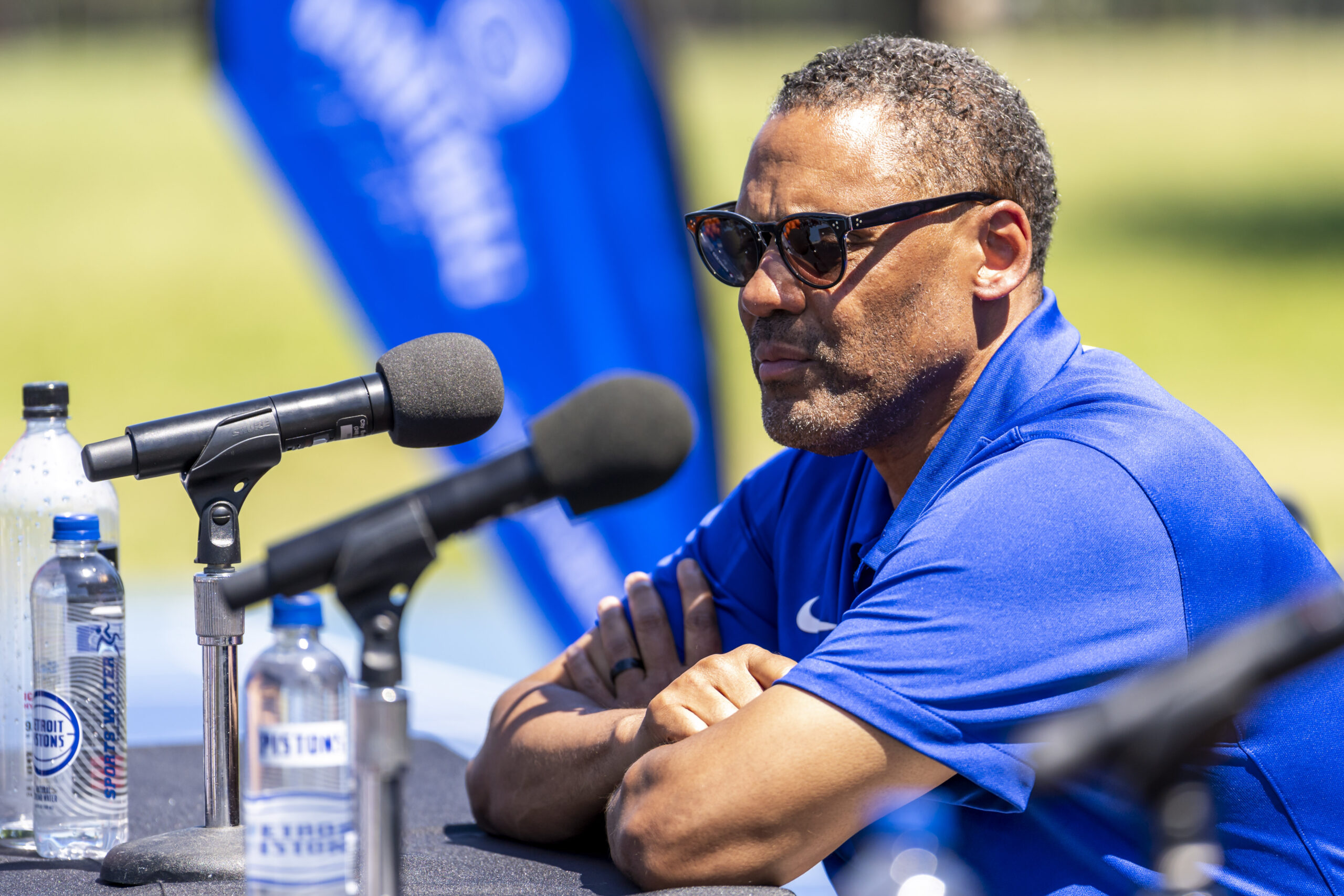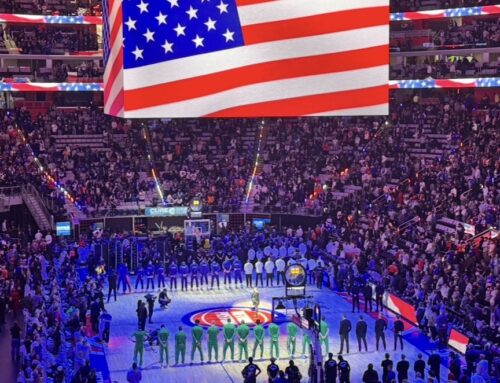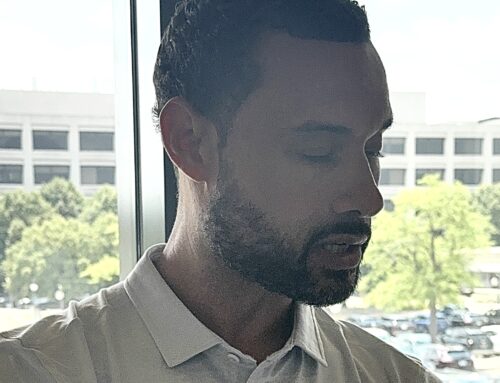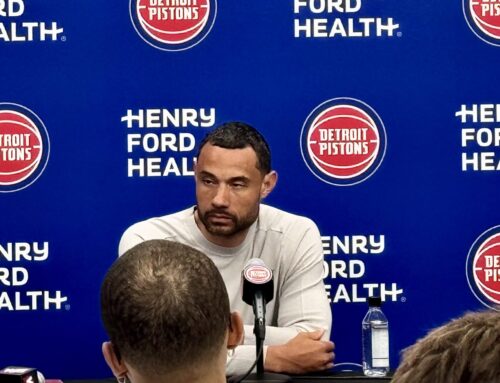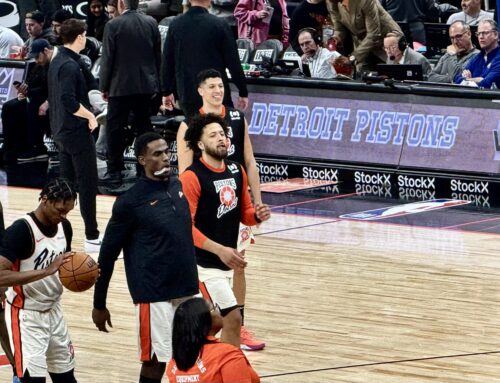In his first two years as GM of the Detroit Pistons, Troy Weaver has spent his offseasons acquiring young talent, signing veteran role players and finding reclamation projects. In his third season, that pattern continued.
The Pistons entered the 2022 NBA offseason as one of the teams with the most cap space in the league. After the lottery, Detroit landed the fifth overall selection in the draft. Trade rumors surrounding forward Jerami Grant began to circulate again as well.
Weaver checked all the boxes of his typical offseason acquisitions. He made numerous trades that brought in veteran players on inexpensive short-term deals. He left the draft with two lottery picks, as well as an early second. Weaver even found his next reclamation project.
Thus far in his tenure as Pistons GM, Weaver has built up a good reputation for talent evaluation and finding good trade value. This offseason, Weaver and the Pistions’ front office made some great moves, but not every one of them was perfect. Some choices were obvious, others will take time to see if they work out.
If you read the title, you know what this was building up to. Here are my grades for the Pistons’ offseason.
Trading Jerami Grant to the Portland Trail Blazers:
Grade: B
The night before the draft, Weaver and the Pistons front office dealt Grant to the Trail Blazers in exchange for a 2025 top four protected first-round pick via Milwaulkee. The trade also included second-round pick swaps that brought Detroit up to the 36th pick in the 2022 draft and dropped Portland to the 46th.
Grant’s trade value peaked at the trade deadline of the 2020-21 season. The veteran power forward posted near All-Star caliber numbers and was in the conversation for the league’s Most Improved Player Award. Had Weaver dealt him then, the Pistons might have been able to acquire multiple first-round picks. However, the team did not trade Grant then. Instead, they waited.
At the trade deadline this past season, trade rumors surrounding Grant surfaced again, and again, Weaver and the front office held onto the 28-year-old. By the time the team did trade Grant this offseason, his value was not nearly as high as it was the previous year. They accepted the best trade package available.
Had the 2022 Draft not unfolded the way it did, this trade falls into the C range. A protected 2025 first-round pick is not much compared to the return the team could have had a year ago. However, knowing what Weaver was able to flip that pick into brings this grade up to a B.
Drafting Jaden Ivey with the fifth overall pick
Grade: A
How do you give Weaver anything but an A for selecting Jaden Ivey with the fifth pick?
The Pistons were in desperate need of a second guard to pair with their franchise star Cade Cunningham. Pairing Killian Hayes next to Cunningham was simply not a good fit. Cory Joseph was a better complement in the backcourt but had obvious limitations in upside, Joseph is better suited in a backup role.
With Ivey on the roster, the Pistons have found Cunningham’s backcourt partner for the foreseeable future. If Ivey maximizes his potential, the duo could be one of the best backcourts in the NBA one day.
Ivey is far from a perfect prospect. He has plenty of room for improvement, and there are questions as to whether or not he will fit well next to Cunningham. But there is little doubt that at the very least, he will develop into a good quality NBA player.
The most basic rule of thumb for drafting is to select the best player available, and that is exactly what Weaver did with the fifth overall selection.
Trading for the draft rights to Jalen Duren
Grade: A
This is the move that brought the Grant trade up to a B rather than somewhere in the C range.
In a three-team deal, Detroit acquired the draft rights to Memphis big man Jalen Duren. In addition to Duren, the trade also dealt veteran guard Kemba Walker to the Pistons with the team expected to buy out the remainder of his contract. What did Detroit have to send back in return? Just the 2025 protected first-rounder they received in the Grant trade.
Duren offers a lot of potential. The 18-year-old is the youngest player from the 2022 draft class. He is an athletic rim runner with the makings of a decent post-up game. Duren also has all of the tools to be an elite rim-protecting big man.
Weaver acquired a second lottery pick in exchange for what will likely be a future first-rounder that will fall in the 20s. By all accounts, the Pistons left the draft with the two players they coveted going into it. Not too shabby.
Drafting Gabriele Procida with the 36th pick
Grade: C+
You can land first-round talent at the beginning of the second round. Did the Pistons get that when they selected Gabriele Procida with the 36th pick? Only time will tell.
Procida is a draft-and-stash prospect. The 20-year-old will get some seasoning playing overseas. If he develops, he could get a chance at playing in the NBA.
There is no guarantee that Procida will make it to the NBA. Not every draft-and-stash player does. There is also no guarantee that Procida will be on the Pistons if he makes his way to the league. His draft rights could easily be included to sweeten a trade offer that Weaver makes down the line.
The selection was a shot in the dark. If Jaden Hardy had not been selected one pick after Procida, this grade is probably a B- instead of a C+. Hardy flashed a lot of potential during his time playing in Summer League for the Dallas Mavericks. The former G-League Ignite guard received first-round hype just one year prior. Instead, Detroit took Procida. We will see what happens.
Trading for Nerlens Noel and Alec Burks
Grade: B+
As the New York Knicks desperately tried to cut salary to open up money for Jalen Brunson, Weaver took advantage of the situation.
Detroit acquired Nerlens Noel, Alec Burks, a 2023 second-round pick, a 2024 second-round pick and cash considerations in exchange for the draft rights to Nikola Radicevic and a protected 2025 second-rounder.
Weaver and the Pistons brought in two players who can contribute immediately and future draft capital for essentially nothing. Most Pistons fans were not even aware that Detroit owned the draft rights to Radicevic.
Both Burks and Noel have team options after this year, so if Weaver and the front office want to pursue a big free agent next offseason, they will have no difficulty freeing up cap space.
In the short term, Burks provides immediate three-point shooting relief to a team that ranked 29th in the league in shooting percentage from beyond the arc. Noel is likely to be more of a depth piece for the Pistons, as the team has a logjam at the center position. It would not be surprising if Noel is dealt to a team looking for a backup rim protector in the middle of this upcoming season.
It is a good deal in the short term. The only thing preventing this trade from rising to the A range is that it is hard to envision either Burks or Noel on the team long-term. It is a good move, but not as impactful as drafting Ivey or acquiring Duren.
Re-signing Marvin Bagley III
Grade: A-
Marvin Bagley III enjoyed a career resurgence after being dealt at the trade deadline to Detroit. The Pistons rewarded Bagley’s play with a three-year contract worth $37 million.
Bagley is positioned to compete for the starting power forward spot this upcoming season. In the small sample size of 18 games, Bagley performed well in Detroit. He is a springy lob threat for Cunningham to throw the ball up to, something that was sorely missing from Detroit’s offense early in the season. If Bagley does not win the starting job, expect him to be the go-to scorer off the bench.
That being said, there is reason to be cautious about retaining Bagley on a $37 million deal. On paper, Bagley’s new contract can be seen as an overpay. It is not likely that the market for the former second-overall pick was that big. If Weaver and the front office waited to re-sign Bagley, it is likely they could have brought him back on a cheaper deal.
However, the team decided not to waste time on bringing back the restricted free agent. There is a bit of projecting on Weaver’s end with Bagley’s cap hit, but if the 23-year-old can continue to grow as a player, there is no reason to think he cannot live up to the billing.
Signing Kevin Knox in free agency
Grade: D+
Weaver loves his reclamation projects. From Josh Jackson and Jahlil Okafor in 2020 to Bagley at the 2022 trade deadline, Weaver has always been on the lookout for a struggling player whose career he can resurrect. This offseason, that player was Kevin Knox.
Since having a poor but not terrible rookie season with the Knicks, Knox has regressed in each season of his career. He struggles to shoot the ball efficiently and saw his minutes diminish in each subsequent season. After he was dealt to the Atlanta Hawks, Knox’s numbers did not improve. He simply has not been able to put it together thus far into his NBA career.
There is potential for Knox to resurrect his career. The talent is there, he was a lottery pick for a reason. However, he has not really flashed that potential in four NBA seasons. Knox’s minutes should have been increasing every year, not decreasing.
In the grand scheme of things, this signing is inconsequential for the Pistons. Knox is on a two-year contract worth $6 million, and the second year of the contract is a team option. If he continues to struggle, the Pistons will have no difficulty parting ways with him next offseason.
Re-signing Rodney McGruder
Grade: C+
There is not really anything negative to say about the Pistons bringing back Rodney McGruder. There is not really any resounding praise to be given either. This is really the most neutral move of the Pistons’ offseason.
The veteran wing signed a one-year minimum deal to return to Detroit. McGruder is a good locker room presence and a reliable three-point shooter in situational lineups. If he makes the final roster, he probably will not make as many appearances as he did last season, but he will be a good player to have on a roster full of players aged 24 and under.
Overall Offseason Grade: A-
Weaver and the Pistons front office put on yet another masterclass of an offseason. The third-year GM continued to acquire young talent to rebuild the roster he tore down just three seasons ago. With the free agent class not providing the talent pool Weaver would have liked, he pushed spending big money down the line to the next offseason when the free agent class is projected to be much deeper.
Landing Ivey and Duren was a major victory for Detroit this offseason. Both players could be foundational pieces of the future. Weaver did a good job supplementing those draft picks with smaller moves to round out the roster with more depth.
Weaver has positioned the team to enter the next phase of its restoration in the coming years. Not every move was a home run, but the Pistons are coming out of this offseason a better team than they were entering it.
(Featured Image Credit: Raj Mehta-USA TODAY Sports)

